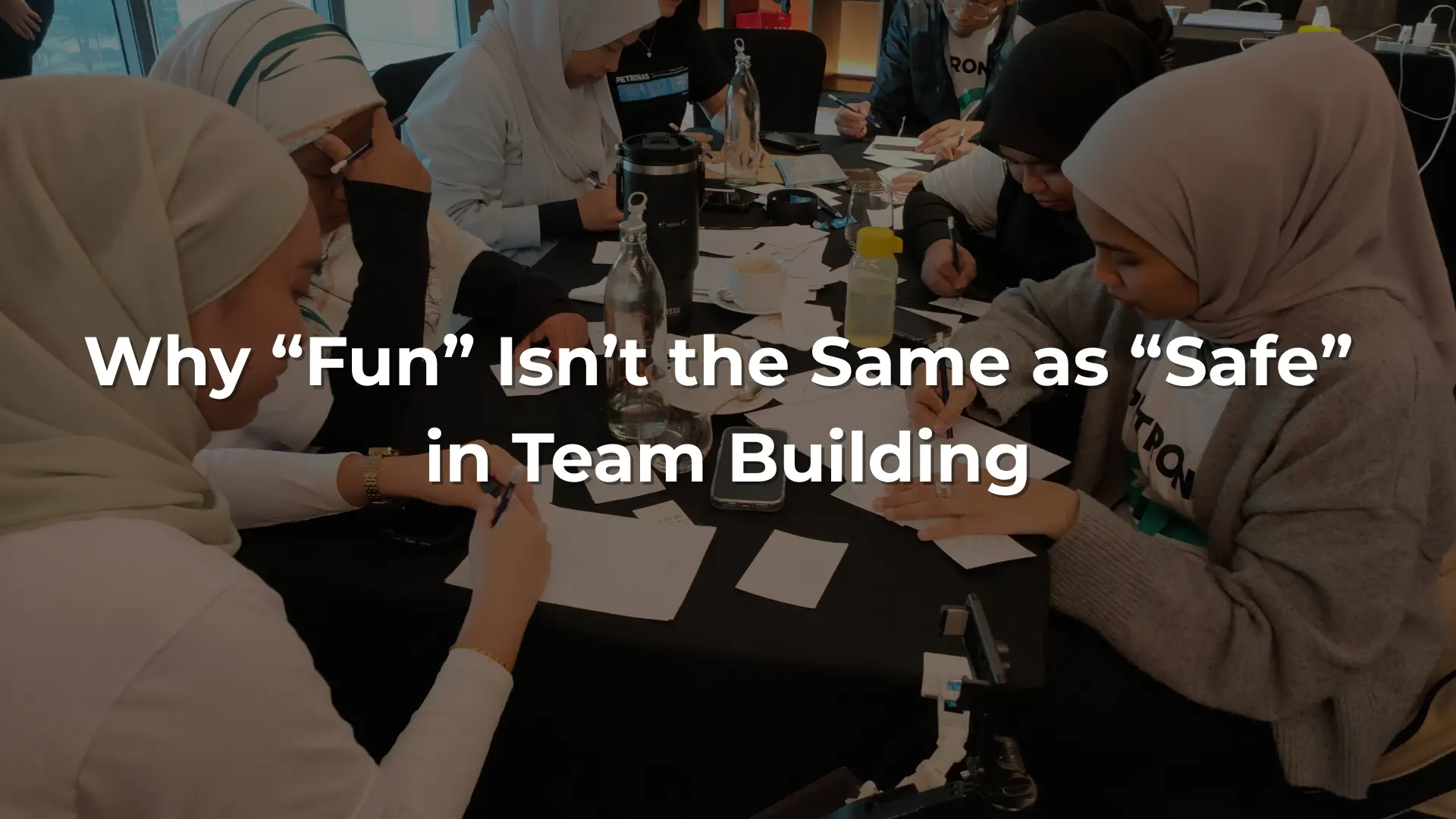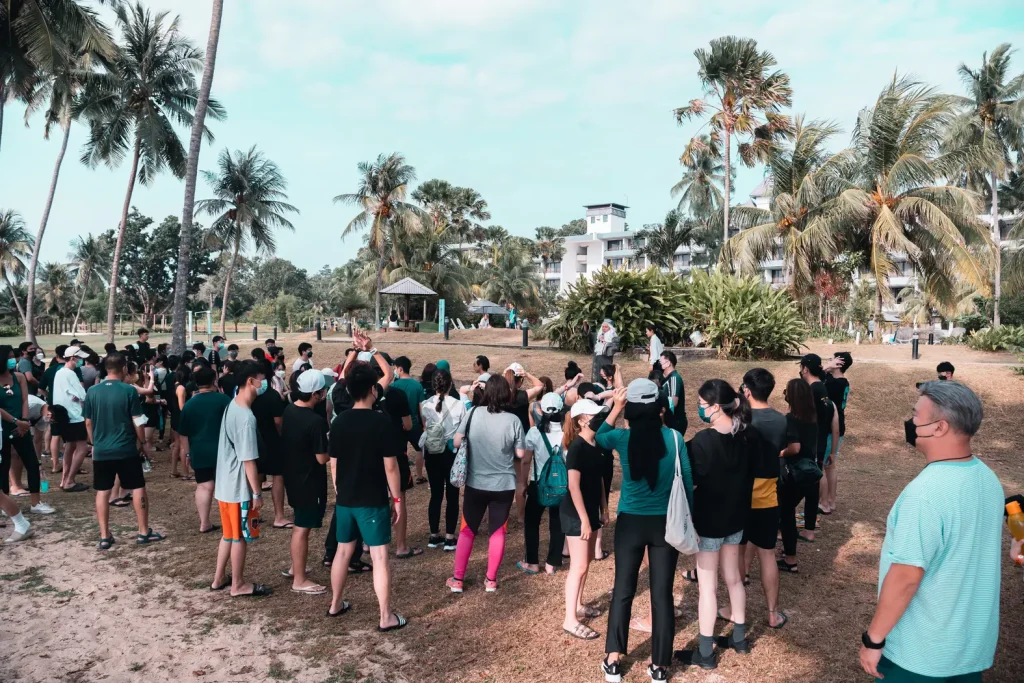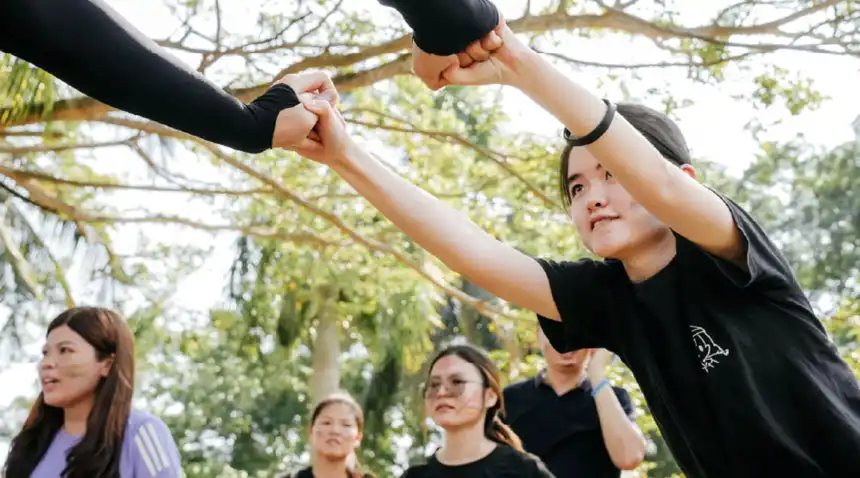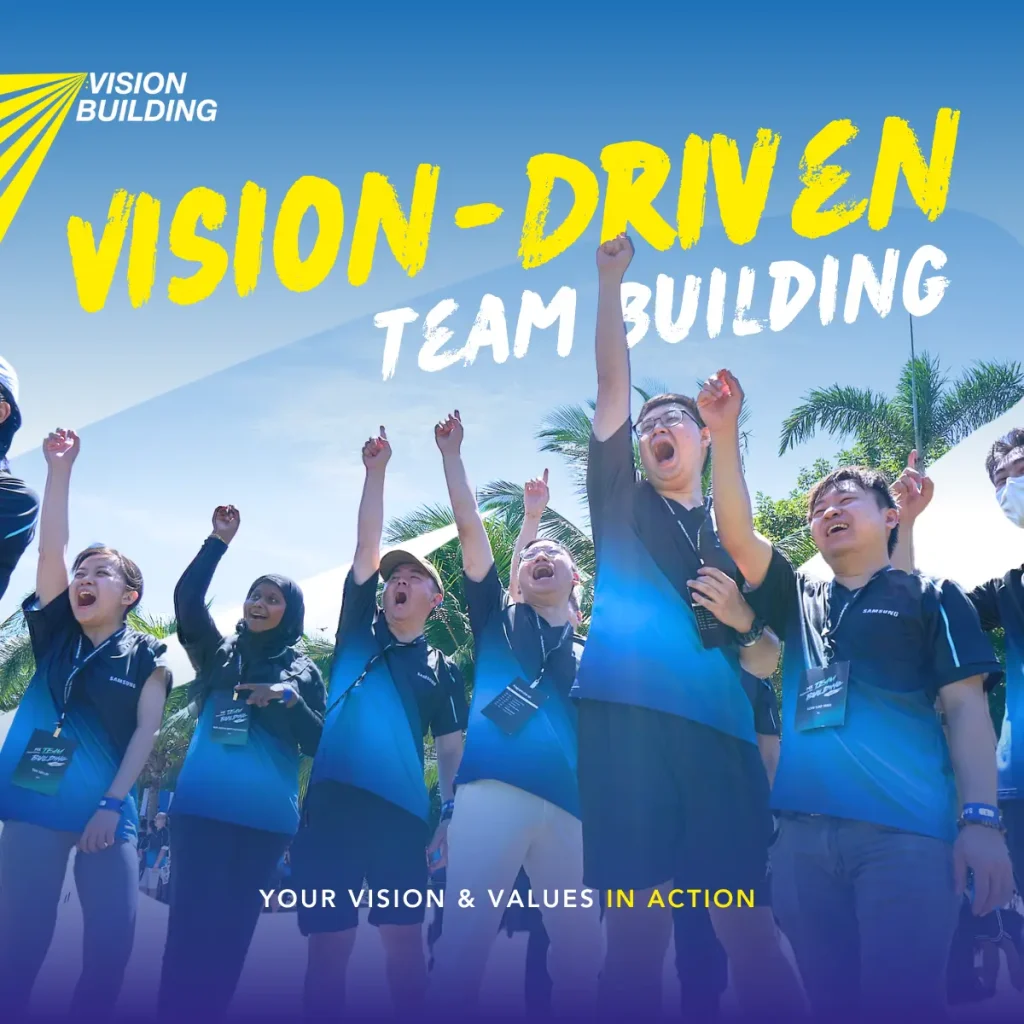
Why “Fun” Isn’t the Same as “Safe” in Team Building
“We Did Team Building… But Nothing Changed.”
Sound familiar?
Maybe you planned a retreat. Played games. Got everyone out of the office.
For a day or two, the energy was high. But then? Everything went back to normal.
No better communication. No clearer alignment.
Just the same silos, tension, and awkward silence in meetings.
So what went wrong?
Does team building really work—or is it just a feel-good expense?
Let’s unpack why some team building sessions don’t stick—and what to do instead.

1. Common Reasons Why Team Building Fails
It was “fun,” but not intentional
Many team building activities focus on games, laughter, and movement—but skip the “why.”
Without a clear purpose, the experience doesn’t connect back to daily work.
Related: 17 Indoor Team Building Activities That Actually Work in Malaysia
(Notice how each activity supports a real team dynamic, not just fun.)
No one followed up
Even great sessions lose impact without post-event integration.
If leaders don’t reinforce learnings or change how they show up, people won’t either.
The team didn’t feel safe enough to be honest
A team can’t grow if it’s not allowed to be real.
If psychological safety is missing, people will only “play along” during activities.
It didn’t match your team’s real needs
A misfit program can do more harm than good.
Introverted teams may shut down with too much hype.
Stressed-out teams may need reflection, not rope courses.

2. What Successful Team Building Actually Looks Like
A team building session works when it leads to small but visible shifts:
- Quieter teammates start speaking up
- People begin giving clearer feedback
- Cross-teams collaborate more smoothly
- Meetings become less performative, more productive
And no, this doesn’t happen overnight.
It starts with the right setup, not just the right activity.
3. How to Design a Team Building That Actually Works
Element
What It Looks Like
Clear Intention
Defined outcomes: “build trust,” “surface assumptions,” “reset team dynamic”
Right Fit
Activities that match your team’s energy, size, and stage
Guided Process
Experienced facilitators—not just game hosts
Safe Environment
Space for honest sharing, not just physical activity
Follow-Up Loop
Internal leaders reinforce key takeaways post-event
See also: The Ultimate Guide to Team Building in Malaysia
(A full breakdown of goals, venues, session types, and formats.)

4. Not All Teams Need the Same Thing
Here’s a simple way to think about it:
If your team...
You might need...
Has never done a team building
A light, fun, get-to-know-you session
Is growing fast with misalignment
A strategy-alignment retreat
Seems disengaged or burnt out
A safe space to talk, reset, and reconnect
Has conflict under the surface
A trust-building experience with guided dialogue
One-size-fits-all never works.
That’s why the most impactful sessions are co-designed with your team’s real dynamics in mind.
Conclusion: Don’t Give Up on Team Building—Do It Right
If your last session didn’t work, it doesn’t mean team building is pointless.
It means the approach missed the mark.
When done with intention, facilitation, and follow-through, team building can:
- Reset broken dynamics
- Rebuild trust
- Align people with a shared direction
And yes—make work feel more human again.

Want help designing a team experience that actually works?
At Vision Building, we help you craft team building sessions with purpose, not just playlists.
From HRDC-claimable programs to hybrid-friendly formats, every activity is built around your team’s real needs.